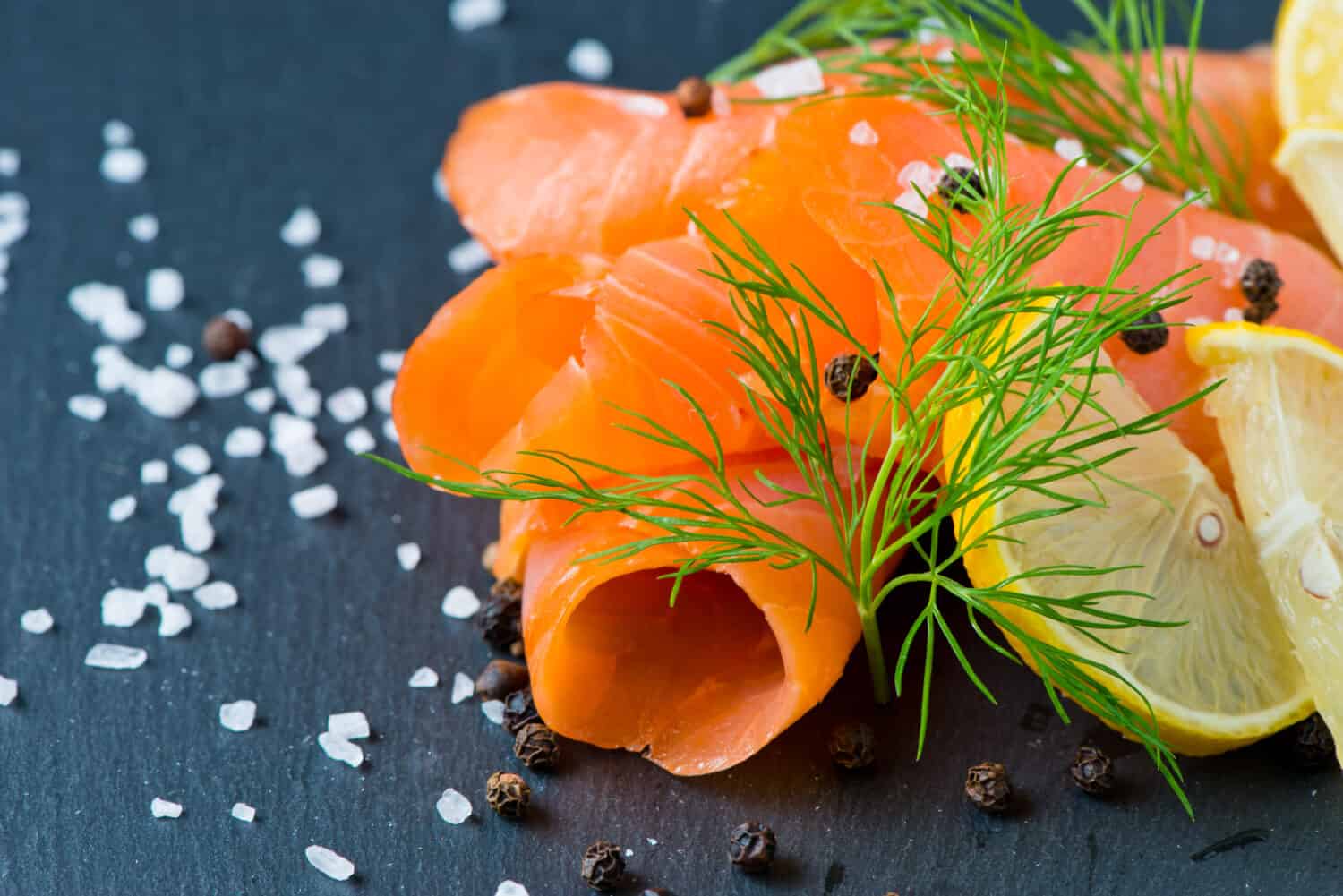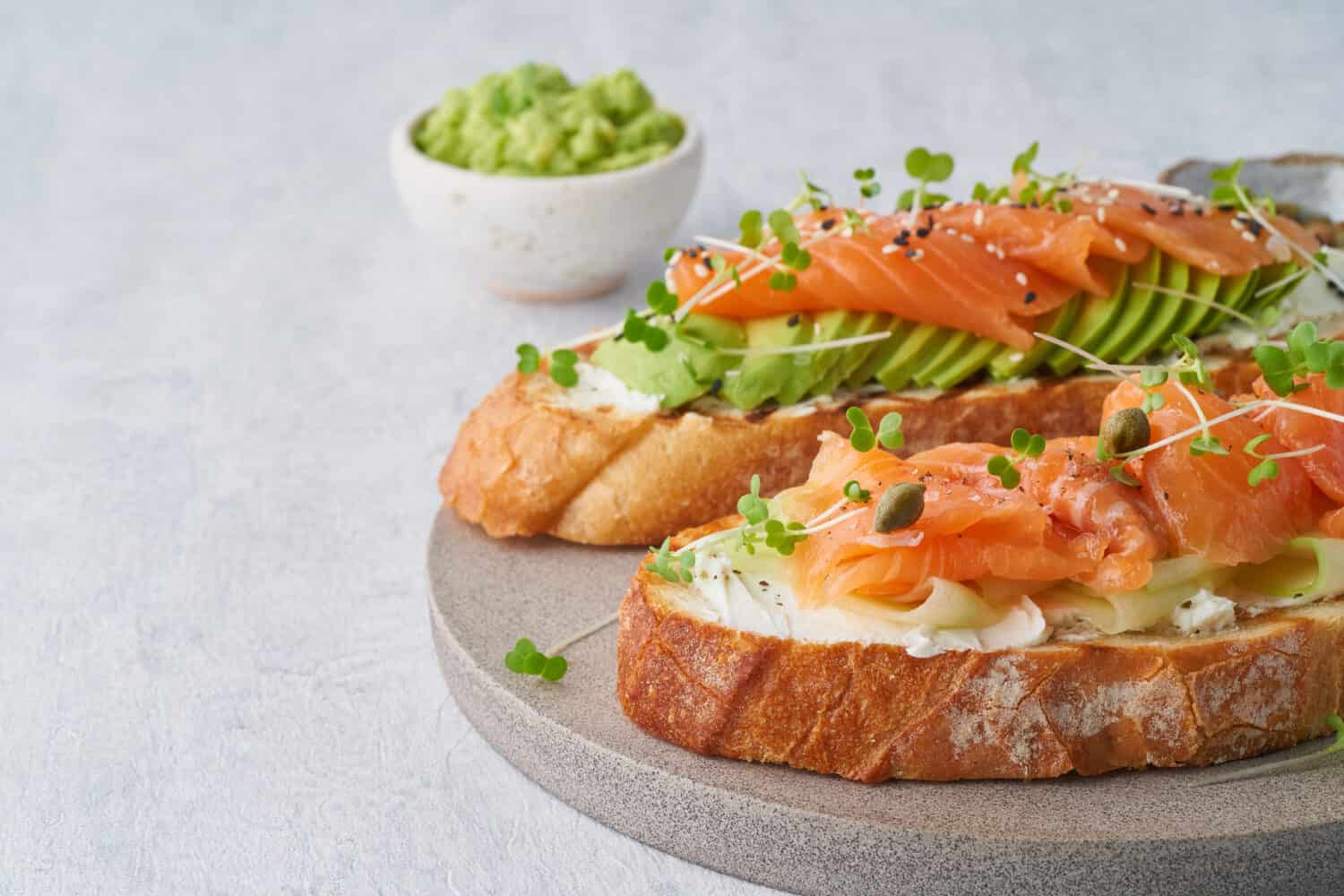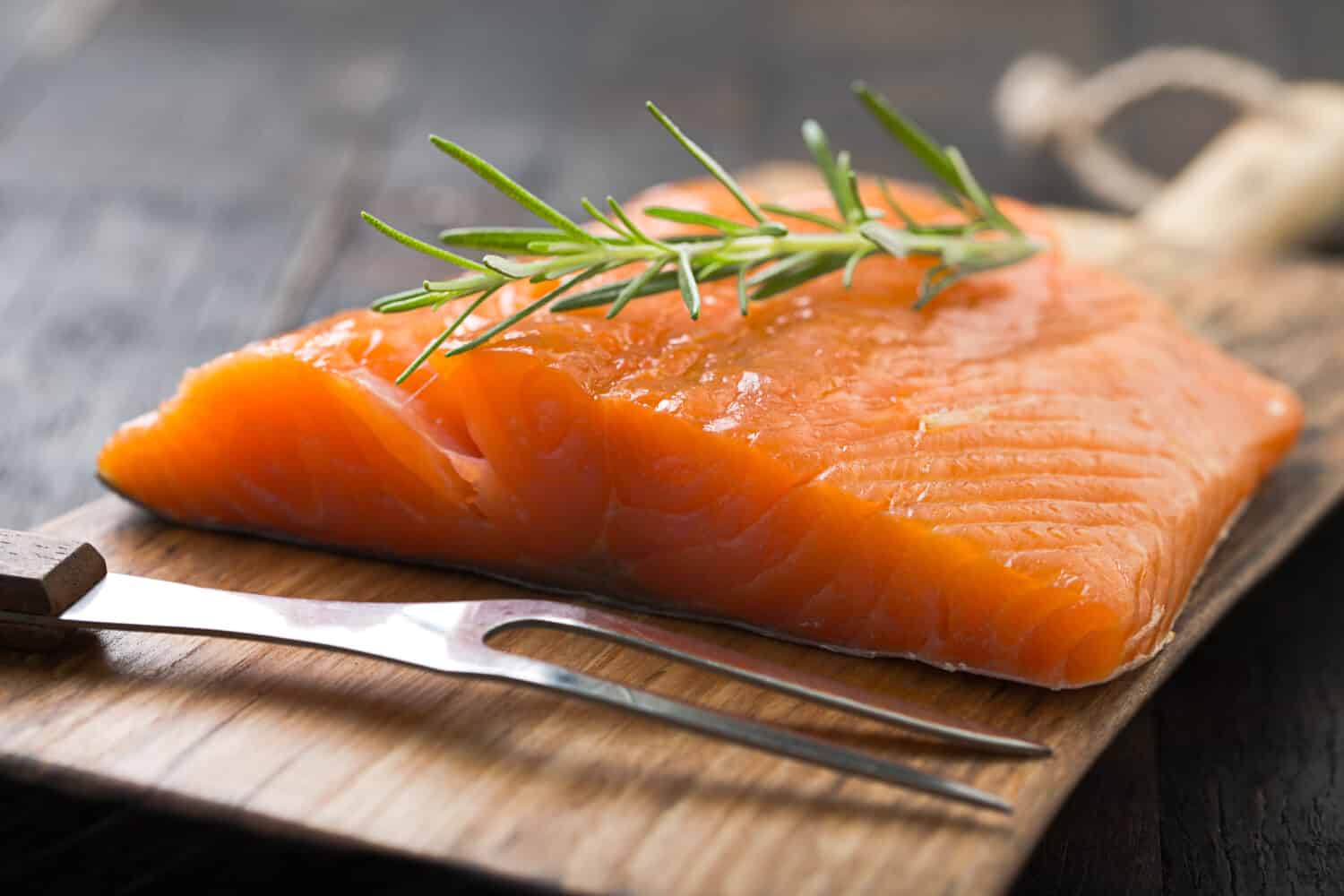Smoked salmon may be one of the greatest bagel toppings to grace the breakfast culinary scene. Of course, it's also a delicacy used in everything from chowders, tarts, and pasta dishes to being served on its own as a filet. But is smoked salmon healthy? Rich in omega-3 fatty acids, vitamins, and protein, it is — in most cases — a healthy addition to your diet. Let’s dig in and find out more about the science behind it!

©Konmac/Shutterstock.com
What is Smoked Salmon, and Where Does it Come From?
Smoked salmon is created through the process of curing and partly dehydrating the fish filet, then exposing it to smoke (whether hot or cold smoking)—typically from wood such as hickory, alder, oak, or pecan. The high temperatures hinder the spread of bacteria and preserve the fish for longevity. The process of smoking salmon has been used for a long time, including in Jewish, Indian, and many Native American cultures. It is also a staple dish in Greek and Roman culinary history, often consumed at major festivities or celebratory events. Smoked salmon was even a major part of people's diet in the Middle Ages.

©Nata Bene/Shutterstock.com
Lox vs. Smoked Salmon: What's the Difference?
Lox and smoked salmon tend to be interchangeable in our culinary vocabularies, so we would be remiss not to mention that although they appear similar, lox and smoked salmon are actually two different products. While smoked salmon endures the curing process followed by the smoking process, lox is only cured — most often in a salt brine for a long time.
What are the Health Advantages and Disadvantages of Smoked Salmon?
Low in saturated fat and chock full of nutrients such as omega-3 and protein, frequent consumption of smoked salmon offers a solid number of health benefits, including lowering the risk of some diseases. Here are a few examples.
Advantages:
- Lowering the risk of cardiovascular disease.
- Improving brain health.
- Lowering the risk of cognitive decline.
- Cutting down on anxiety.
- Lowering weight.
- Fighting inflammation.
Disadvantages:
While processed foods have been salted, fermented, pickled, or preserved to extend their shelf life and eliminate microorganisms, they can introduce higher amounts of salt and sugar to your diet. Such is the case with smoked salmon, which tends to contain elevated levels of sodium. There is also a risk of Listeria, which is one of the most common microbial contamination concerns for smoked salmon.
Additionally, smoking meats and fish can result in nitrites and nitrates, which can potentially be converted into carcinogenic compounds within our bodies.

©Mateusz Gzik/Shutterstock.com
Important Takeaways:
- Hot- or cold-smoking salmon is the process of curing and smoking salmon filets.
- Smoked salmon's culinary history is longstanding. It was even part of people's diet in the Middle Ages!
- Smoked salmon is low in saturated fat and full of nutrients such as omega-3 and protein.
- Smoking salmon extends its shelf life and eliminates microorganisms.
- Smoked salmon has anti-inflammatory properties, lowers the risk of cardiovascular disease, improves brain health, and more.
- Smoked salmon is higher in sodium content than a fresh salmon filet.
- Though we tend to use them interchangeably, lox and smoked salmon are actually made differently.

Spicy Smoked Salmon
- Yield: 2 cups 1x
Ingredients
- 12 ounces cream cheese, at room temperature
- 1/3 cup sour cream
- 1 Tablespoon fresh lemon juice
- 6 dashes Tabasco sauce
- 3 scallions, white and green parts, thinly sliced
- 3 Tablespoons capers, rinsed and drained
- 8 ounces smoked salmon, coarsely chopped
- 3 Tablespoons chopped fresh dill or 1 Tablespoon dried dill
- fresh ground black pepper
- fresh dill, for garnish
- crackers or breadsticks, for serving
Instructions
- Puree the cream cheese, sour cream, lemon juice, and Tabasco in a food processor.
- Add the scallions, capers, salmon, chopped dill, and pepper, and pulse to blend.
- Garnish with the dill and serve chilled with crackers.
The image featured at the top of this post is ©Konmac/Shutterstock.com.

